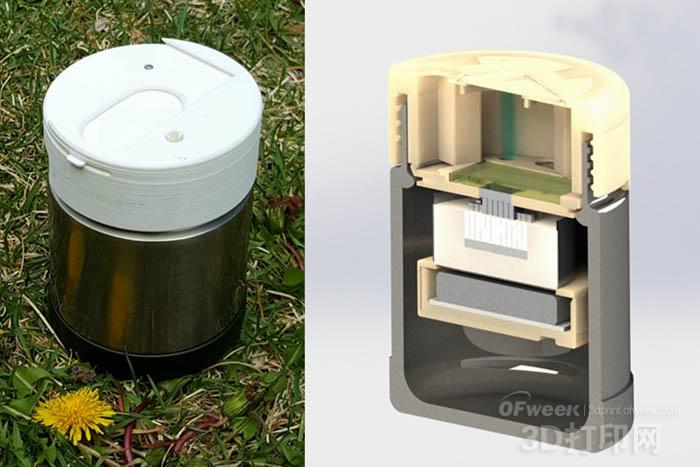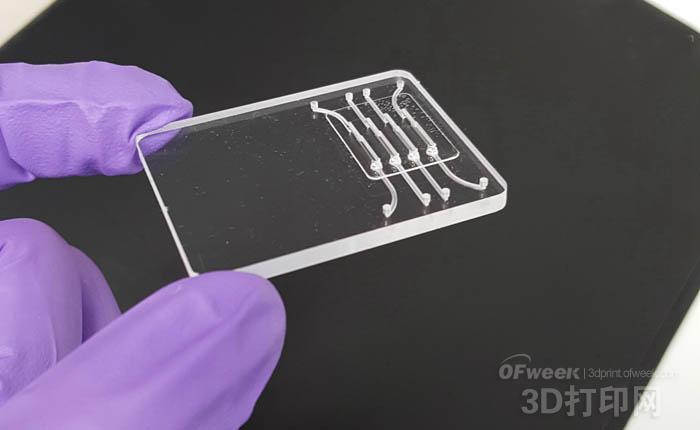Zika virus detection unit with 3D printing parts costs only $2
Recently, scientists at the University of Pennsylvania (Upenn) have developed a low-cost 3D printing device that can quickly detect the Zika virus. It is reported that this 3D printing detection device has only one soda water tank size, cost only 2 US dollars, and does not need electricity, nor professional technicians to operate. The patient only needs to provide a sample of saliva. When genetic analysis detects the presence of a virus, the discolorable fuel in the device will turn blue.
This fast and accurate diagnosis is said to be especially important for pregnant women who may be infected, and the only approved virus detection method at the moment requires highly sensitive laboratory equipment, which is very inconvenient. Therefore, diagnostic tools that can be used in the wild will become a key to people's victory over Zika virus outbreaks.
Currently, scientists presented the design and their test results in a study published in Analytical Chemistry. It is understood that this research was carried out by a team led by Professor Liu Changchun and Professor Haim Bau, assistant professors of mechanical engineering and applied mechanics.

It is understood that testing the genetic material of the Zika virus itself by testing is considered to be the gold standard for diagnosing this virus. Alternatives, such as detection of antibodies to the virus produced in the human body, are not sufficient, because for those patients who have been infected but have not yet produced enough antibodies, false negative results may occur; Aspects If the test subject produces similar antibodies due to other diseases, false positive results are also obtained.
The test for finding the corresponding RNA fragment from the virus itself is called reverse transcription polymerase chain reaction, or RT-pcr technology. This testing technique can avoid the above two problems. But RT-pcr technology needs to be done in a well-equipped lab. Viral gene fragments in patient samples must be amplified or replicated until they reach a level at which they can be detected, often involving multiple precise temperature changes.
It is said that to make this test more convenient or easy to carry, the amplification of the gene fragment is the most important obstacle. For this reason, scientists at the University of Pennsylvania have found a kind of RT-LAMP (reverse transcription loop). An alternative to isothermal amplification, which only requires the sample to be placed at a specific temperature without the need to cycle through multiple precise temperature changes like RT-PCR.

However, as a cost to simplify the process of amplification of the gene, RT-LAMP requires more specialized "primers", some short gene fragments to match specific regions of the test viral target gene.
"Although there are Zika virus primers for RT-PCR technology in the technical literature, there is no one for RT-LAMP technology," Bau said. “So, through data mining, we identified highly conserved sequences in the Zika virus genome that are different from other known pathogens, and then designed appropriate primers to identify this sequence.â€
“At the same time,†Liu Changchun said: “We developed a low-cost point-of-care system using 3D printing technology . This system consists of a diagnostic box and a processor. This box can be separated, concentrated and purified. The nucleic acid is amplified by enzymes. The final test results can be visually revealed by the color change of a dye."

Liu Changchun, Research Assistant Professor, University of Pennsylvania
Later, scientists also studied how to keep the sample at the necessary temperature without using electricity. Their solutions include thermos, components that self-heat by chemical reactions like military rations, and waxy substances that absorb excess heat. The researchers also printed a lid on the top of the thermos in 3D to hold all the test parts.
Once the patient's saliva sample is introduced into the box, the entire test takes approximately 40 minutes to complete. The researchers verified their effects by incorporating their saliva into a virus sample. The results show that the sensitivity is equivalent to RT-PCR detection. Future scientists will also try to quantify virus content through a fluorescent dye and integrated smartphone camera.
It is reported that Liu Changchun and Haim Bau also won the One Health Award in 2015 for their work in the field of molecular diagnostics.
A Great Addition to Outdoor Garden Decoration
The adorable solar statue is weather-proof, rust-resistant, and durable for years of quality use. With its artistic look and intricate details, the outdoor sculpture adds a delicate touch of illuminating beauty at night.
Please Note:
1. Make sure the button is set to the "ON" position and keep charging for 10 hours under the sun at the first using.
2. It may take longer time to full charge if there is no strong light or in Winter. Please do not let it covered by the leaves, flowers or trees, or it can`t absorb solar energy or will light up at daytime.
Effective Solar Panel
During the days the solar panel collects sunlight and converts it into electrical power. Automatically turn on at night or in dark environment, auto turn off at dawn.
FAQHow to know that the button is at "ON" position?
Cover the solar panel with your hand and if the light is on, then the button is at "ON" position.
Solar Powered Garden Statue, Solar Powered Garden Statue, Solar Powered, Statues and Figurins.
HISMOK(SHENZHEN)TECHNOLOGY CO.,LTD , https://www.will-trade.com